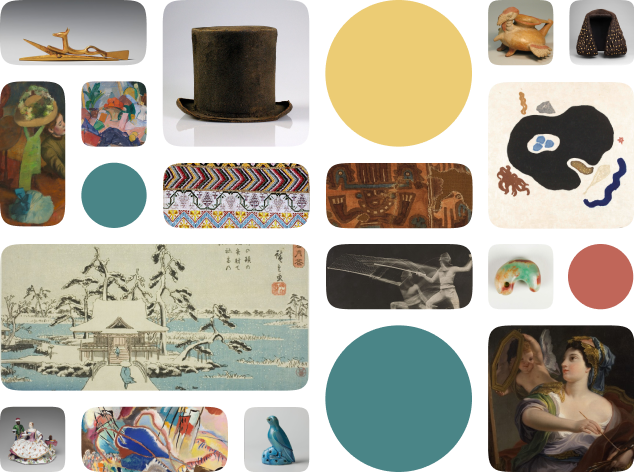Paddle Doll
Creator Name
Cultural Context
Date
Source
About the Work
Dating to about 2,000 BCE this paddle doll has a painted, keyhole-shaped body and beaded strings for hair. The pubic region is demarcated by hair and a prominent labia painted on the rounded bottom. Its shape resembles the menat amulet, typically worn on beaded necklaces. The menat would be shaken like a rattle to appease deities. Likewise, the paddle doll's hair creates a percussive sound against the wooden body when shaken.
Paddle dolls have been found in group burials among instruments used by professional dance groups, known as kheners. Khener dancers were devotees of the goddess Hathor, who is often depicted with menats. The groups mainly performed at funeral ceremonies.
Paddle dolls have been found in group burials among instruments used by professional dance groups, known as kheners. Khener dancers were devotees of the goddess Hathor, who is often depicted with menats. The groups mainly performed at funeral ceremonies.
Metropolitan Museum of Art Object Description
Paddle doll
Work details
"--" = no data available
Title
Creator
Worktype
--
Cultural Context
Material
Dimensions
Technique
--
Language
--
Date
Provenance
Style Period
Rights
Inscription
--
Location
Source
Subjects
Topic
--
Curationist Contributors
Related Content
All Works in Curationist’s archives can be reproduced and used freely. How to attribute this Work:
Unknown, Paddle Doll, circa 2030–1802 BCE. Metropolitan Museum of Art. Egyptian paddle dolls, such as this work, have been described as instruments, burial objects, and erotic figures. Public Domain.
Help us improve this content!
Let our archivists know if you have something to add.
Save this work.
Start an account to add this work to your personal curated collection.
